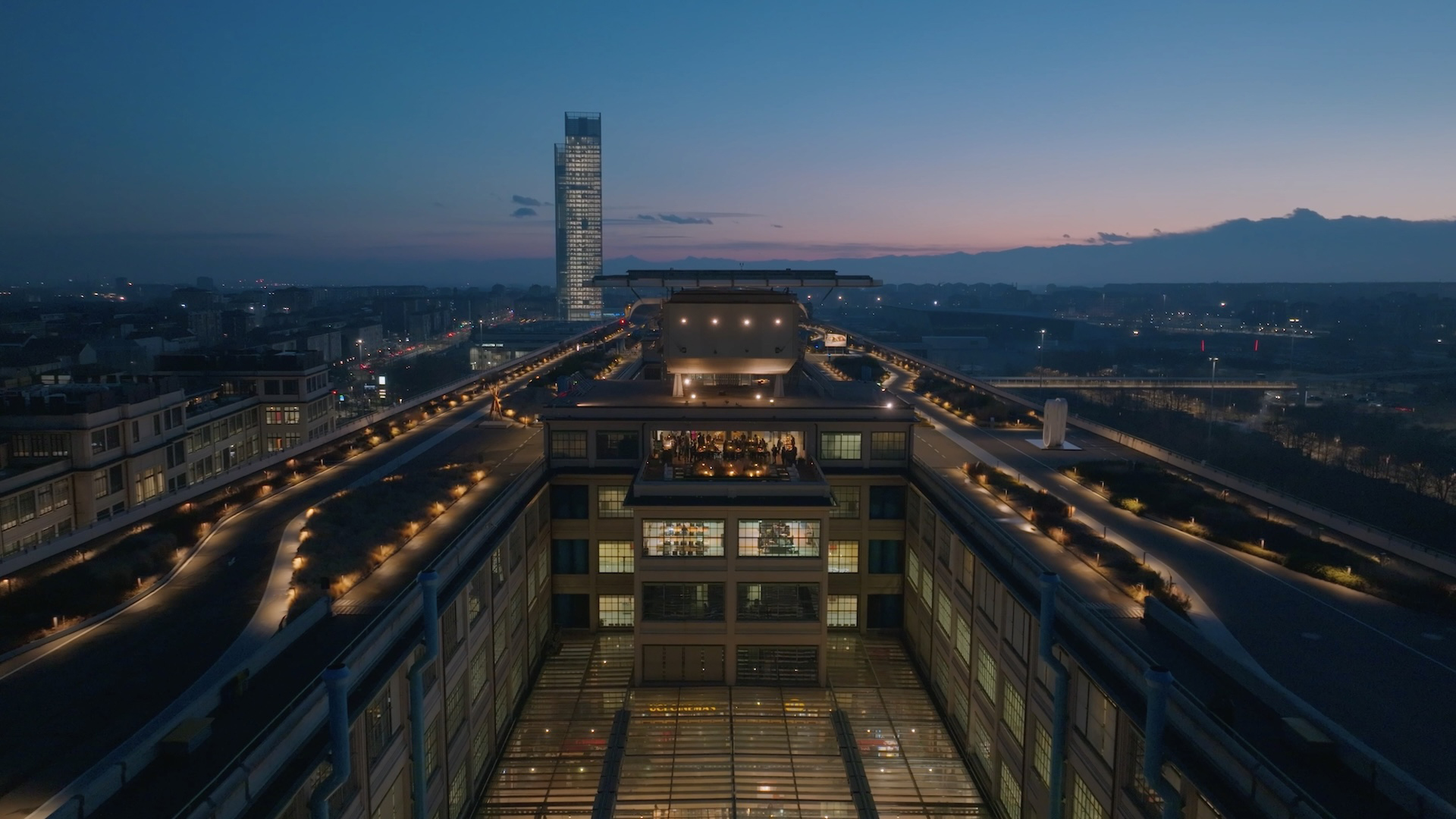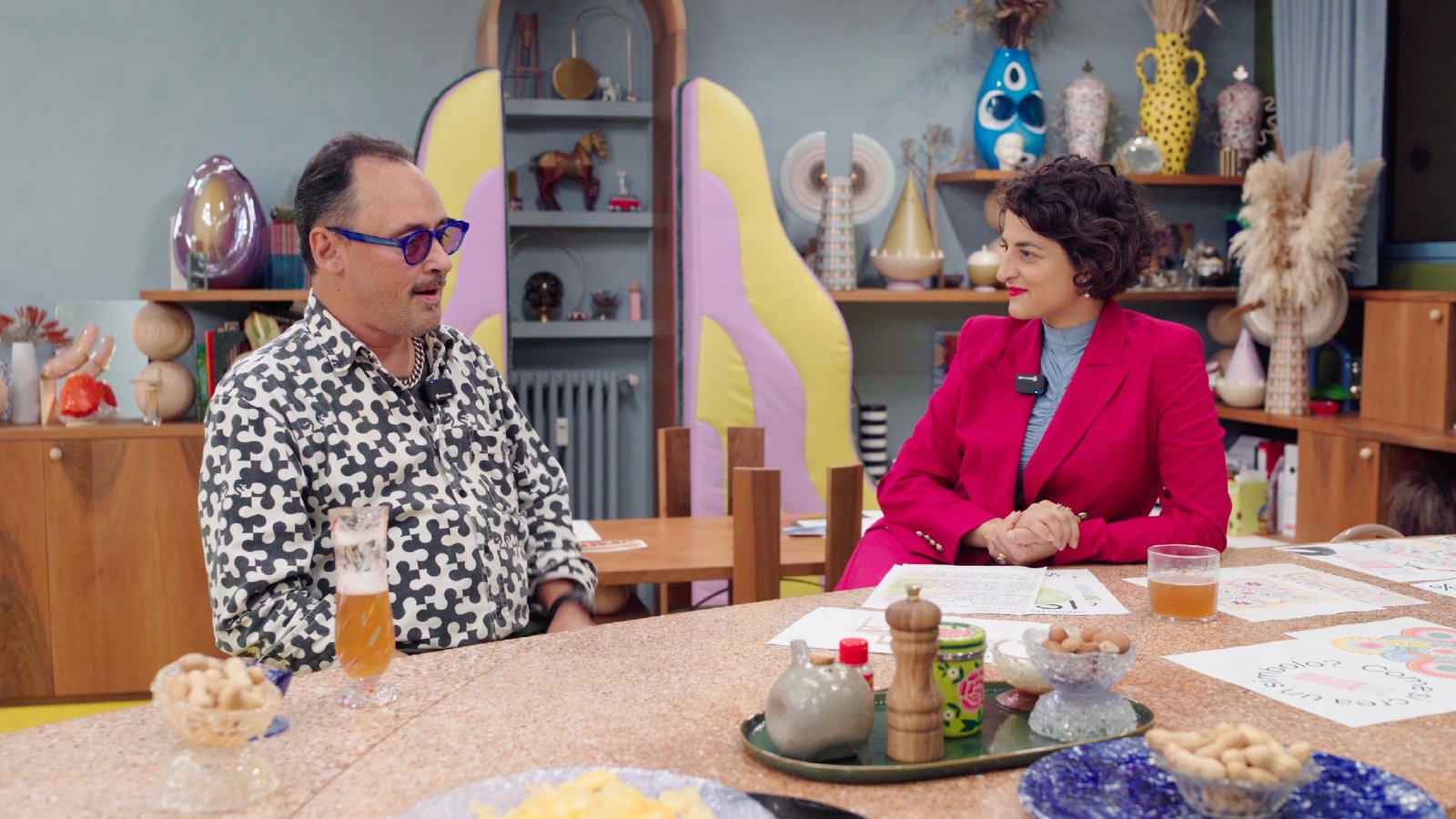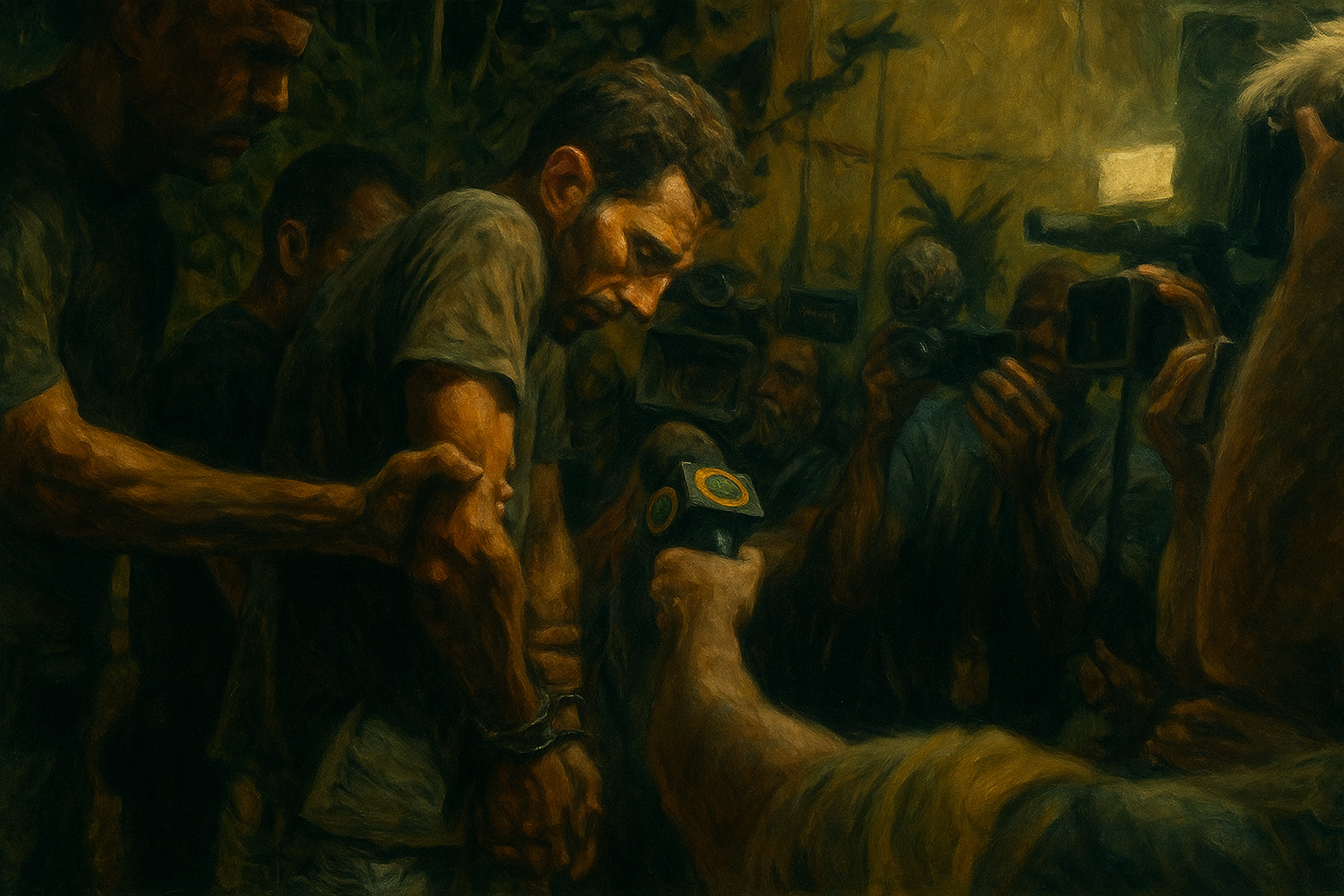
Who Killed Brent Sikkema? The Murder of the New York Gallerist Between Art, Inheritance, and Betrayal
The brutal murder of Brent Sikkema in Rio de Janeiro, suspicion falling on his husband Daniel Carrera, and investigations spanning Cuba, Brazil, and the United States. A story of love, money, and blood that shakes the art world.
A police officer steps out of the patrol car. The red and blue flashing lights paint the night around a gas station in the Brazilian state of Minas Gerais, about 960 kilometers northwest of Rio. The officer walks toward a car parked to the side. He knocks on the window with his fist and wakes the driver sleeping inside. The man quickly turns to his left and, through the glass, sees the uniform and badge over the officer’s heart. He freezes — his body doesn’t even have time to flinch or sweat before he is dragged out of the car, thrown to the ground, and handcuffed. His name is Alejandro Triana Prevez. He is a Cuban citizen and is accused of murder.
“Jardim Botânico in Rio de Janeiro is my refuge from the chaos of Manhattan, an ‘oasis’ that brings me peace — and the place where, when I die, I wish for my ashes to be scattered.”
These were the words of renowned gallerist Brent Sikkema during an interview, as he spoke about his house in Rio — one of his many homes scattered around the world. Reread today, knowing what would happen shortly after, those words sound like a terrible omen.
It is January 14, 2024, just past 4 a.m. A man wearing a baseball cap exits a row house in the Jardim Botânico neighborhood of Rio de Janeiro. The asphalt glistens, still wet from the rain. The man crosses the street, reaches the opposite sidewalk, gets into his car, and drives away. Surveillance cameras record everything. Entrance. Exit. A precise, traceable timeline.
Inside the house, in the bedroom, Brent Sikkema’s lifeless body is found hours later. Eighteen stab wounds ended his life. A cruel, ruthless death.
Inside the house, there are clear signs of a struggle. Brent fought back. He tried to resist the brute force of his killer. He tried to survive that blind burst of violence. Forty thousand dollars are missing from the home. According to Brazilian police, it was a robbery gone wrong. The murder weapon? A kitchen knife. Likely taken from inside Brent’s own home.
That is how Brent Sikkema, a renowned 75-year-old New York gallerist, is killed — leaving behind a son and a husband, from whom he had been separated for some time.
Everything seems clear. A straightforward case. No apparent shadows.
But those who knew Brent — especially his lawyer, who had handled his separation and recent legal matters — say it immediately: something doesn't add up.
From the security camera, the police trace the license plate of the car the alleged killer used to flee the scene. They follow the lead and, a few days later, the vehicle is found at a gas station in the state of Minas Gerais.
At the wheel is Alejandro Triana Prevez, a Cuban citizen who, for a time, had worked as a security guard at one of Sikkema’s homes in Cuba. The police arrest him. The image of Prevez being paraded before the press becomes infamous: handcuffed, thin-framed, his features hollowed out, caught in the flash of cameras. A terrified expression on his face.
For many, the case is closed.
Brent Sikkema’s murder shocks the art world. For over fifty years, he was a pillar of the international cultural scene, helping bring to prominence a diverse group of painters, sculptors, and photographers.
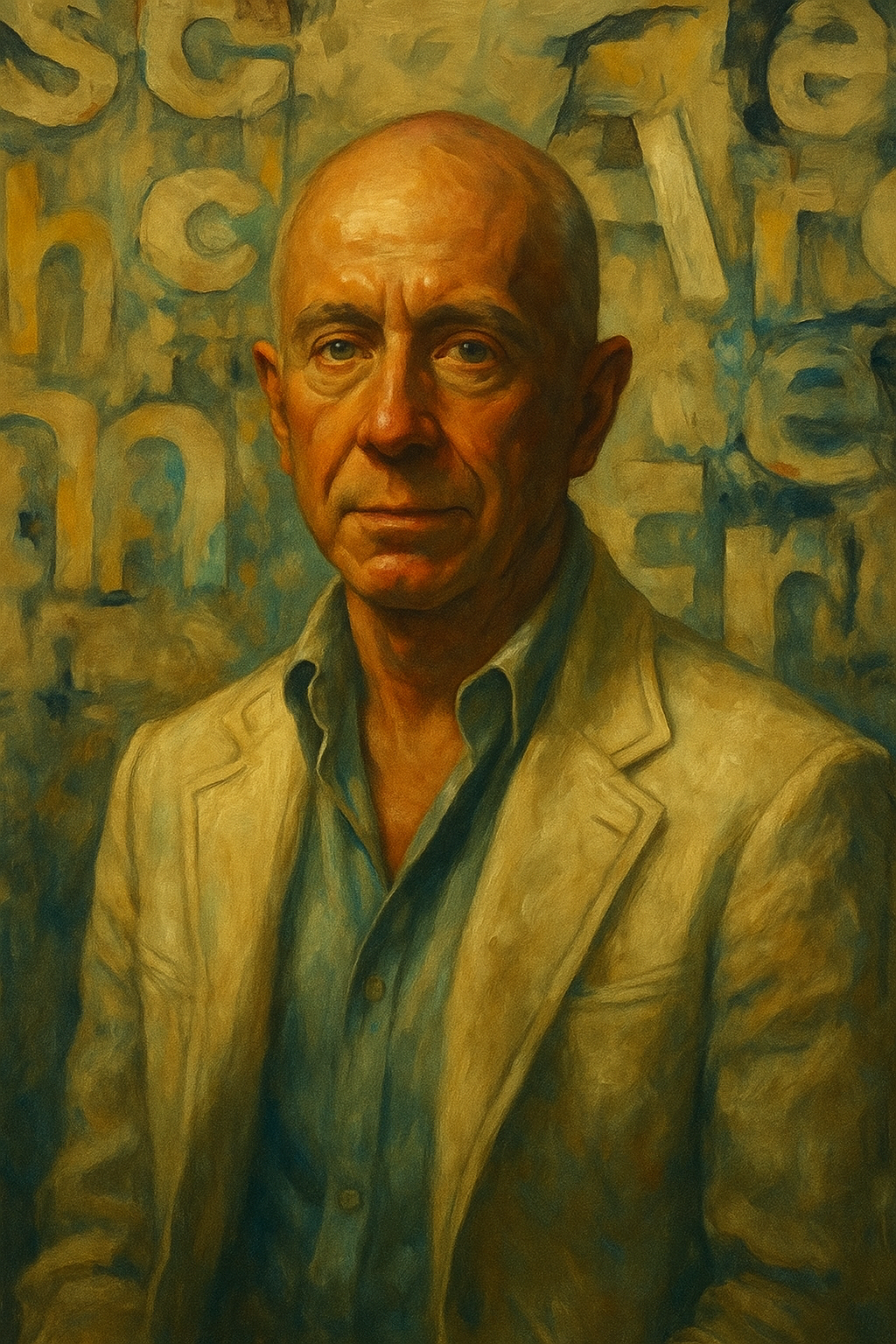 Portrait of Brent Sikkema, image created with AI
Portrait of Brent Sikkema, image created with AI
Sikkema was born in a rural area of Illinois, the Prairie State, named for its flat, sweeping landscapes. The youngest of two children, his parents ran a local tavern where Brent spent much of his childhood.
But that rural, working-class life felt too small for him. In the 1960s, he moved to San Francisco, where he studied photography and directing at the San Francisco Art Institute. His goal was clear: to become a great photographer. He shot only in black and white and, for a time, broke into the world of images, even working for several galleries.
In 1991, he moved to New York and took a leap: founding a gallery of his own. Thus, Wooster Gardens was born in SoHo — the city’s trendiest neighborhood — entirely dedicated to American contemporary art. Here, Brent connected with a vibrant network of curators, artists, writers, and journalists. Together, they built a rich social and community fabric, deeply intertwined with the contemporary art scene.
As a gallerist, Brent was particularly drawn to minority artists and, over the years, became an active supporter of many female artists.
Those who knew him and shared those years remember him this way: “He could truly see the world’s complexity and understand it. He felt a duty to work with those artists and help tell their truth.”
In the late 1990s, Brent met his future business partner: Michael Jenkins. With him, he transformed Wooster Gardens into an international powerhouse. In 1999, the gallery moved to its current location in Chelsea, the heart of Manhattan, and changed its name: Sikkema Jenkins & Co (today Sikkema Malloy Jenkins).
Brent’s dream came true. His gallery became one of New York’s most influential, representing prominent names like Jeffrey Gibson, Sheila Hicks, Vik Muniz, Kara Walker, and Louis Fratino.
It was at the height of his professional success that Brent met the man who would become his husband: Daniel Garcia Carrera.
It was 2007. In the aisles of Art Basel Miami, under the cold, clinical lights of the booths, the spark ignited. Love at first sight. A passionate, all-consuming love. Soon after, Daniel moved into Brent’s Manhattan apartment.
Daniel’s life was the opposite of Brent’s. Born in poverty-stricken Cuba, he suffered abuse as a child. For a time, he was forced into prostitution to survive. Life on the island was harsh, choked by control. Freedom there was just an illusion. Still very young, Daniel decided he’d had enough. He escaped to the United States, leaving the Cuban regime behind for good.
There were twenty years between him and Brent. Their financial situations were worlds apart. Some would say Daniel lived off Brent. But nothing seemed to shake their bond. In 2010, through a surrogate mother, their son was born.
Due to a bureaucratic error, Brent was listed as “mother” and Daniel as “father” on the birth certificate. An anomaly that, in a way, speaks to the strength and tenderness of their relationship.
In 2013, they married. Brent ran the gallery; Daniel managed the household and their son. They traveled. Lived carefree — luxury vacations in Cuba, Brazil, Europe. Brent adored Daniel. Thought of him as a wonderful father.
People who knew them described them as: “A solid couple, in love. A rare, authentic example of a true marriage.”
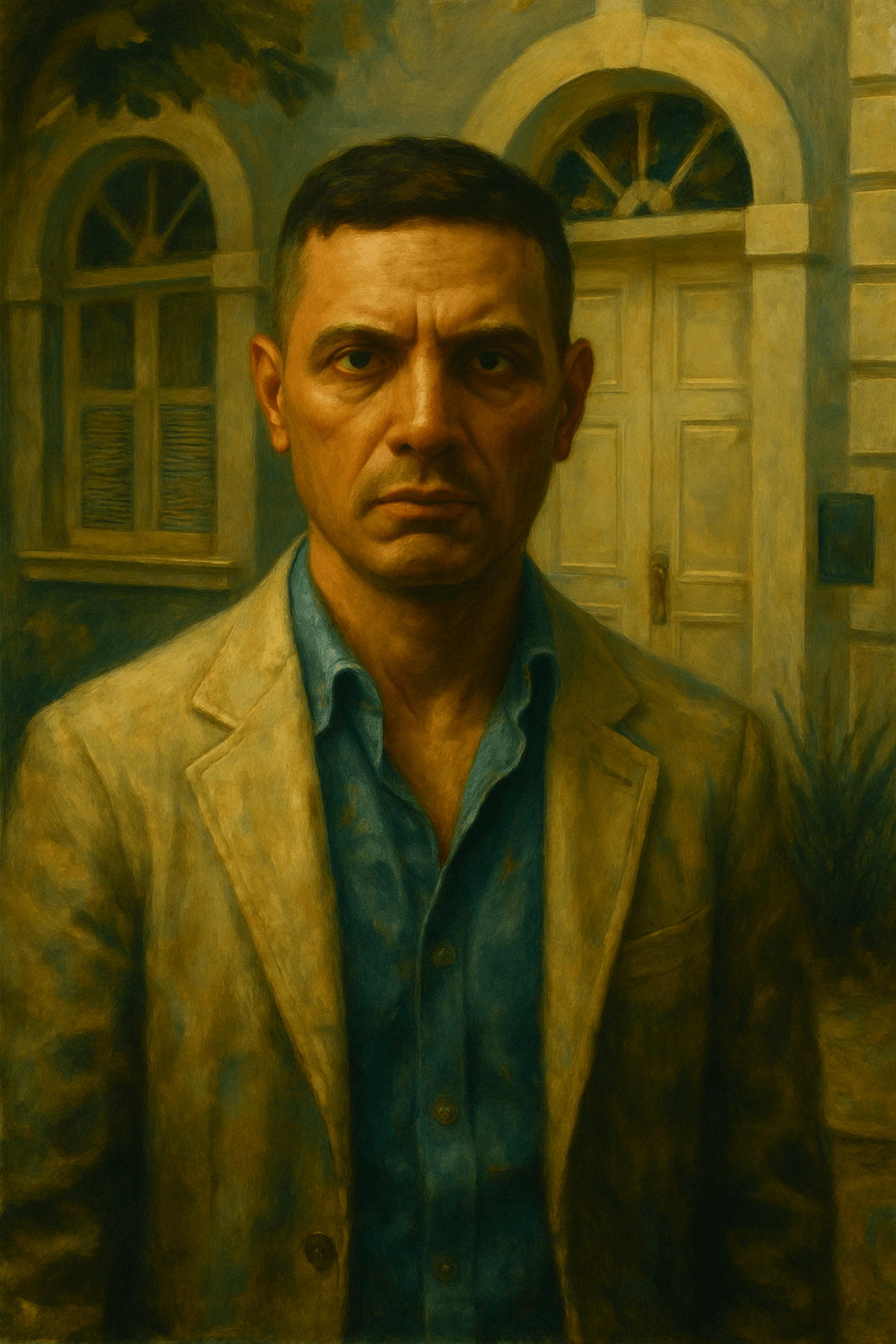 Portrait of Daniel Garcia Carrera, image created with AI
Portrait of Daniel Garcia Carrera, image created with AI
From 2019, the first cracks appeared between Brent and Daniel. At first, just some arguments. Then misunderstandings, silence. Both became defensive. Day by day, space for dialogue shrank.
Then came the pandemic. The world stopped, and so did their relationship. Daniel asked for more freedom. Proposed opening the relationship. Brent refused. That “no” created a deep rift, destined to grow. After the COVID-19 emergency, the two became increasingly distant. Daniel spent long periods at the Havana house. Brent stayed in New York.
In 2022, Daniel officially filed for divorce.
From then on, there was no trace left of the magical bond they once had. Court proceedings began: lawyers, hearings, tension. The central issue? Custody of their son.
No one can truly explain how love turns to hate. But it does. Perhaps it’s the fate of all consuming passion: the stronger the start, the fiercer the end. Accusations flew from both sides. Brent began to feel threatened. He decided to protect his assets. Without Daniel’s knowledge, he removed him from the will.
He assigned a significant portion of his estate to a trust created solely for their son. From that moment, Daniel was no longer an heir. Everything was entrusted to attorney James Deaver — Brent’s confidant and executor of his last wishes.
And so we return to him. Alejandro Triana Prevez. Handcuffed, humiliated, taken to prison on charges of murdering Brent Sikkema.
After a few months in custody, during a series of interrogations, Prevez broke down. And began to tell another version of the story. He accused Brent’s husband, Daniel Carrera, of being the mastermind behind the murder.
According to his statement, it was the winter of 2023 when Daniel contacted him — offering $200,000 in exchange for the life of his ex-husband.
A premeditated murder. Perhaps motivated by the desire to claim the massive inheritance, despite the marriage being over. The police reopened the case, following this new lead. Evidence emerged quickly: phone records between Daniel and Prevez, proof they were in Havana at the same time — coincidences too precise to ignore.
 Brent Sikkema's house in Jardim Botânico neighborhood in Rio de Janeiro. image created with AI
Brent Sikkema's house in Jardim Botânico neighborhood in Rio de Janeiro. image created with AI
A new chapter began. Lawyers entered the fray. A fierce battle followed: evidence, counter-evidence, hearings, interrogations. Then, in February 2025, the turning point: the U.S. Department of Justice formally charged Daniel Carrera with orchestrating the murder of Brent Sikkema.
The trial is currently underway. Daniel faces life imprisonment. Or, in the worst-case scenario, the death penalty.
According to the FBI’s deputy director, who personally followed the case, Daniel used the fact that he was still legally married to Brent to plan a contract killing. The goal: not just the inheritance — but also full custody of their son.
The truth now lies with a judge. A jury. A legal system that must weigh every piece of this story.
The only thing truly certain is that on the night of January 14, Brent tried to resist the murderous fury of his killer. He fought, in the heart of the night, to protect the life he had built. The life he loved deeply.
We — truth-hungry spectators, true crime fans, amateur detectives always eager to come up with a theory — any theory, as long as it’s ours — often forget one fundamental thing.
Sometimes, our thirst for investigations, our almost pornographic desire to solve these cases, becomes stronger than the respect we owe the victims.
Respect for those who can no longer defend themselves.
Respect for those who lost their lives.
Cover image: Moment of Alejandro Triana Prevez’s arrest, image created with AI
Alessio Vigni, born in 1994. He designs, edits, writes and deals with contemporary art and culture.
He collaborates with important museums, art fairs and artistic organisations. As an independent curator, he works mainly with emerging artists. He recently curated “Warm waters” (Rome, 2025), “SNITCH Vol.2” (Verona, 2024) and the exhibition “Empathic Dialogues” (Milan, 2024). His curatorial practice explores the relationship between the human body and the social relationships of contemporary man.
He writes for several specialised magazines and is author of art catalogues and podcasts. For Psicografici Editore he is co-author of SNITCH. Dentro la trappola (Rome, 2023). Since 2024 he has been a member of the Advisory Board of (un)fair.


